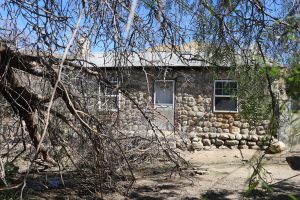Your cart is currently empty!

Josephine was born on June 30th, 1912 and grew up in Moreno Valley California somewhere near where March Airforce Base now sits. Josephine was the daughter of William Morongo and Martha Chino. Her maternal grandfather was Pedro Chino, a well-known Cahuilla Medicine Man. Pedro was from Palm Springs and lived in an area known as Chino Canyon which was named after him and his family. Josephine’s paternal grandparents were Ben and Rose Morongo, Ben was the brother of Captain John Morongo. In 1922 Josephine married a Cahuilla man originally from Torres Martinez named Jose Dolores Norte who was more commonly known as Dolores Norte. Josephine and Dolores were married until Dolores passed away in 1957, they had no children.
Josephine (Morongo) Norte was one of Morongo’s early leaders, serving as the Spokesperson for the Morongo Business Committee in 1951 and 1955 respectively. Before the creation of the Tribal Council Morongo had a Tribal Business Committee that essentially filled the same role as Tribal Council but in a more limited capacity. The Spokesperson served as the head of the Tribal Business Committee and handled relations between the Reservation, Federal Government, and surrounding communities. As Spokesperson it was up to Josephine and the rest of the Tribal Business Committee to oversee the conflicts that arose on the Morongo reservation. Many Tribal Members were now experiencing water and agricultural issues that they had never faced before as a result of the limited water supply on the reservation. When the land was communally owned there were significantly less issues surrounding water because resources were more commonly shared amongst Tribal Members. After the land was allotted, water had to be divided out to the individual allotments. This became a problem as Morongo at the time did not have the proper infrastructure to support each individual allotment using water all at once. As a solution Morongo Tribal members were placed on a water usage schedule to ensure that every allotment had equal opportunity and access to water. However, the solution was not perfect and when issues arose Josephine was entrusted by the Mission Indian Agency to work alongside water tenders to handle any disputes or grievances regarding water before the concerns were escalated in the Mission Indian Agency.
It could not be understated Mrs. Norte’s importance and role that she played in the rights that Morongo has with their land and water, but she also contributed to Morongo culturally. In the 1960s and the 1970s, linguists and other scholars became interested in the Serrano language as there were less than 10 native speakers of the language left, which included Mrs. Norte. She was interviewed by Guy Tyler, a man that worked in the television industry in Los Angeles in the years 1977 and 1978. The bulk of Guy’s interviews collected words and sentences from Mrs. Norte, however there was one interview dedicated to her family history and life. One of the fascinating aspects of these interviews is how Mrs. Norte spoke the Serrano language as she spoke the language a little differently compared to the other native Serrano speakers that were also interviewed around the same time. It is possible that Mrs. Norte possibly spoke a different dialect of Serrano as she was born in Moreno Valley, if this was the case her speech would reflect how the Serrano people spoke the language in that region. If we compare Mrs. Norte’s speech with the speech of Mrs. Sarah Martin, who was also a primary informant interviewed on the Serrano language, we can see and hear that their speech is different. Some examples of the differing speech between Mrs. Martin and Mrs. Norte are listed below:
Woman
Mrs. Martin: neerht
Mrs. Norte: noorht
Tomorrow
Mrs. Martin: ‘uva’im
Mrs. Norte: ‘uwa’hp
Mountain
Mrs. Martin: qaaych
Mrs. Norte: kaaych
Of course, these examples only show a glimpse of Mrs. Norte’s speech, however it opens up the conversation Serrano dialects that are sometimes overlooked. And although this difference is interesting, the most important message is that Josephine was willing to share her knowledge of her language for future generations of Serrano speakers to learn from. Josephine understood that there were not many people left that were able to speak the Serrano language, so few that she could even name them all from memory. We are beyond grateful for the time Josephine dedicated to these interviews as it allows us to listen to her voice 46 years later and still learn something new about the Serrano language from the viewpoint of an elder who thought it was dwindling away.
Any Questions or Comments? Feel Free to Reach Out!
Bibliography
National Archives, Land Allotment Files 1897 – 1977 Box 10: Josephine Norte File
National Archives, Tribal Government Service Files Box 5, File 065 Elections – Morongo #1 FY 1948 – 1967
Norte, Josephine. Interviews. Conducted by Guy Tyler. 1977 and 1978.
